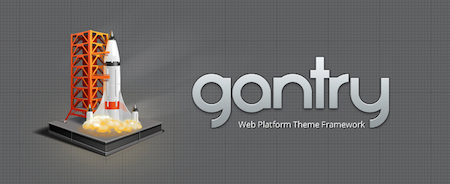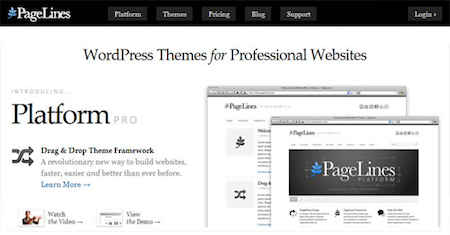For new users of WordPress, there’s often some confusion between themes and theme frameworks. There’s a strong relationship between the two, but they aren’t identical and the term “theme framework” covers several types of product. If you want to buy a theme and you end up with a theme framework instead you’re likely to be dissatisfied, so we’d like to clarify the difference between the two and highlight some of the most popular theme frameworks.

Themes
Put simply, a theme controls the look of a WordPress site. That includes the layout, typography, color scheme, and various pieces of functionality that contribute to the user experience of the site. Themes tend to be “opinionated”. They are created by designers and developers who have a particular way of doing things in mind: a specific look and feel for the WordPress sites they are installed on. The level of configuration available for WordPress themes varies, and the best come with many different options for customization, but they do impose limitations by making some choices hard or impossible to implement.
For example, if you buy a one-page WordPress theme with specific home page elements for featured content, testimonials, a slider, image placement, and so on, you’re going to have a hard time converting it into a multipage site with completely different home page content without delving into the PHP and HTML code.
So, there are advantages and disadvantages to choosing a theme. You should opt for a theme that provides the basic appearance and functionality you need without expecting complete flexibility. On the other hand, because a theme has made many of the choices for you, you’ll be able to get a site up and running very quickly without much effort expended on development and design: you can concentrate on content rather than appearance.
Theme Frameworks
Theme frameworks are more flexible than themes. Frameworks provide much of the functionality that is needed to build bespoke themes. Theme frameworks are often created by theme development companies to build their own themes on. How easy they make creating a theme varies depending on the type of framework.
Code Library Framework
Code library frameworks are much like libraries in other software development contexts. They implement higher level functions on top of those that WordPress provides. They make it easier for developers and designers to create themes by making often used pieces of functionality available. The Gantry Framework is an example of this sort of theme framework. Novice WordPress users should probably not consider using a code library framework: they require fairly extensive knowledge of CSS, HTML, and PHP, and are not themes in their own right.

Base Themes
Base themes provide much of the functionality of an ordinary theme, but encourage the creation of a child theme which can then be customized by the user. They offer a starting point for creating a theme at a higher level than code libraries and can range from a normal theme which includes a child theme to a framework like the Genesis Framework which cannot be used a standalone theme.
Usually, these are easier to get to grips with than code library frameworks and include many elements that can be flexibly arranged, but they still require some knowledge of coding for the web.
Drag-and-Drop Theme Frameworks
At the other end of the scale from code libraries are drag-and-drop frameworks like PageLines or Catalyst. PageLines is a fully featured WordPress theme framework that allows for the creation of beautiful unique websites without any coding (although you can get your hands dirty if you want).

Should You Choose A Theme Framework?
If you can’t find a theme that fits your needs and want more flexibility about the look and feel of your site, then theme frameworks are a great option to have, so long as you understand that they will require more work than just installing a ready-made theme. If you want to get your site online a looking good as quickly as possible, then a theme is probably a better option.

